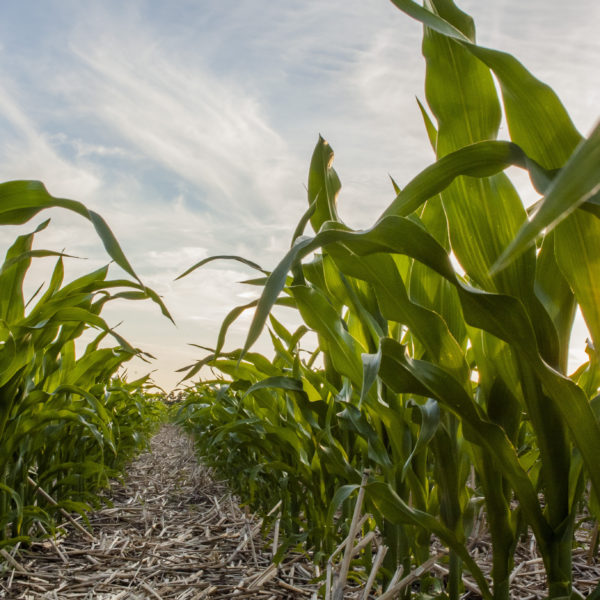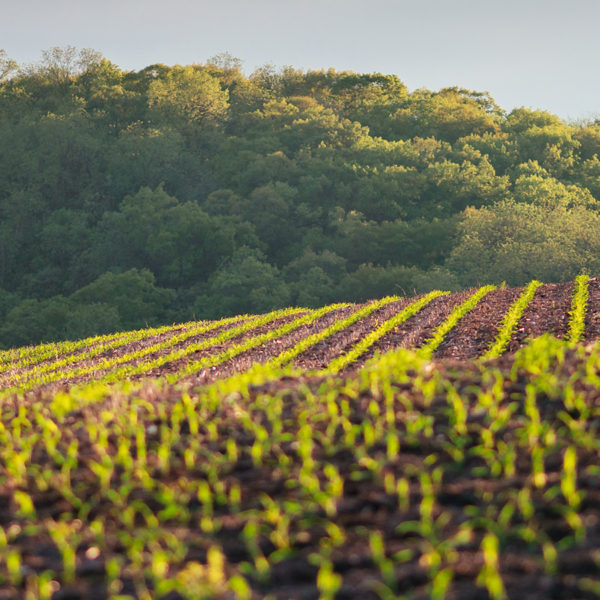2030 Goals and Measuring Progress
As a geographically focused partnership between leading food and agriculture companies and environmental non-profits, the Midwest Row Crop Collaborative represents an important place-based initiative for regenerative agriculture in the row crop system in the Midwest. MRCC has developed a theory of change for removing barriers to the adoption of sustainable practices that can lead to regenerative outcomes, at scale.

2030 Goals
MRCC has three goals aligned with its shared ambition for a more regenerative agricultural system, and the scale and urgency that is needed to achieve it.
By the end of 2030, the Midwest Row Crop Collaborative will:
- Ensure 30 million acres in the Midwest employ practices that support improved outcomes for soil health, greenhouse gases, water quality and use, biodiversity, or farmer livelihoods. At least 1 million of these acres will demonstrate multiple measurable regenerative outcomes.
- Reduce net on-farm greenhouse gas emissions in the Midwest row crop supply chain by 7 million metric tons.
- Directly support at least 30,000 Midwestern farm operations in the transition to regenerative agriculture.
As a collaborative platform, MRCC helps to catalyze impact across the work that its members do in the region. The goals reflect the collective desired impact from individual members’ work supporting regenerative agriculture in the region and are made possible by the commitments and efforts of each member.

Principles of regenerative agriculture to guide our work
“Regenerative agriculture” has no agreed upon definition. It can be more useful to define it by describing it through its philosophy, principles, and practices. The following principles help guide MRCC’s work as it makes progress toward its goals:
- Generate positive impacts from agricultural practices, including soil health, water quality, climate benefits, and biodiversity.
- Enable local communities to protect and improve their environment, health, and wellbeing.
- Build resilience through diversity of plant species, businesses, people, and culture.
- Promote equity and economic viability for all in the farming system, especially farm families and minority or marginalized farmers.
- Produce crops with sufficient yield and nutritional quality to meet existing and future needs, while keeping the impact of resource inputs as low as possible.
Measuring Progress
We believe that regeneration is an outcome rather than any individual practice or set of practices. MRCC’s goals, and how we will measure progress, reflect our intent to push beyond practice adoption to measurable regenerative outcomes, balanced with the sector’s current ability to measure outcomes across a complex landscape. While we track practice adoption as an indicator of outcomes, we plan to report outcomes wherever possible and continue to push for improving our ability to measure outcomes on the landscape.
For Goal 1, MRCC will report on progress made by member using a set of shared KPIs aligned with industry-standard tools (e.g., using the Fieldprint platform and Cool Farm Tool). Projects must demonstrate a combination of practices that have been shown to support beneficial outcomes, such as:
- Nutrient-fixing cover crops
- Conservation tillage (reduced, strip, no-till) and crop residue management
- Extended crop rotation
- 4R nutrient management
- Integrated pest management
- Irrigation efficiency and locally appropriate irrigation management
- Pollinator habitat development
- Edge-of-field practices like riparian corridors, buffer zones, and wetland restoration
- Retiring marginal, highly erodible, or flood-prone acres
Practices should be context-specific to an area, where implementation will lead to beneficial outcomes, and should be expected to lead to multiple outcomes across soil health, water, biodiversity, social benefits, and other indicators.
Reporting on progress made by members against Goal 2 will use industry-standard approaches for the agriculture sector based on the Greenhouse Gas Protocol. As the science and protocols evolve for monitoring, reporting, and verifying emissions reductions and removals in U.S. agricultural value chains, MRCC members will re-evaluate their progress toward this goal by no later than 2025 and may raise this figure as protocols are updated.
For Goal 3, member support for farmers reported by MRCC should be ongoing and tangible, enabling a farmer to maintain, improve, or implement new practices to deliver improved outcomes. Support may come in the form of:
- Grant, loan, or other financial assistance that provides cost-share funding for, or reduces expenses of, conservation practice implementation
- Training and/or technical assistance on conservation / regenerative agriculture tools, practices, techniques, and management decisions, providing actionable insights to farmers
- Support for farmer participation in learning networks